Last Updated: 21/11/2025
How to Teach A Dog to Sit
Wondering how to teach your dog or puppy to sit? Check out our tips and tricks to make the process easier for everyone from our vet team.
Author: Dr Teagan Lever BVSc (Hons)
Reading Time: 3 minutes - short read
Check out our Better Puppy Bundle - a complete vet-approved puppy essentials pack, designed to help tick off your 'new puppy checklist'. It contains parasite prevention, toys, treats, training aids, food vouchers, and more!
Filled with up to $230 worth of products, our discounted price ($49.95) makes for incredible value! This new puppy bundle is available in different sizes - for small, medium, or large breed pups.
Step 1 - Understand How Dog Training Works
Dogs learn just like humans, by trial and error. Their learning goes on whether we are actively teaching them or not. Dogs learn in 2 main ways - through classical conditioning, or operant conditioning.
When we are training our dogs to perform certain behaviours or tricks, we are using operant conditioning. This is where we pair the appropriate behaviour with a reward, which makes the behaviour more likely to happen the next time. If used correctly through positive reinforcement, operant conditioning can create a wonderful bond between you and your dog, and is so beneficial for their mental health and enrichment. Dogs will naturally seek to perform behaviours that have brought positive consequences, and will try to avoid behaviours that have brought negative consequences in the past.
Step 2 - Gear Up with the Right Dog Training Equipment
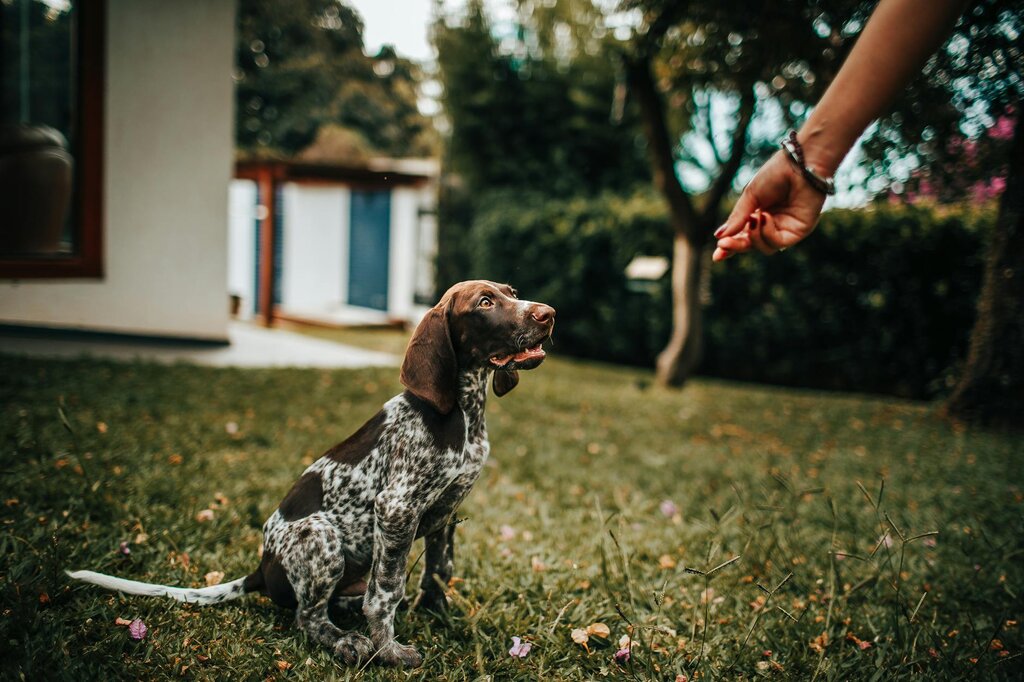
Before you start training, it's important to have the right tools to make your dog's learning a success. Everyone who will be involved in training your dog should use consistent techniques to help your dog learn quickly and effectively.
'Luring' and 'capturing' are 2 important words in dog training. 'Luring' means to guide your dog to perform a behaviour by using a tasty treat in front of his nose to get him to move his body into the correct position. The 'lure' is the treat. Capturing the behaviour means that you let your dog know that they've performed the correct behaviour the moment that it occurs. This can be through the use of a specific word or phrase, like 'yes' or 'good boy', or a clicker. This is then followed up by giving your dog the treat. The specific word, phrase or clicker becomes the 'bridge' between behaviour and reward, and becomes an indication to your dog to expect a reward.
Clickers are very beneficial when teaching behaviours and tricks. They are used to capture behaviours the moment they occur, and are useful as they are a unique sound that your dog will not hear elsewhere. For more information, see our article Clicker Training Your Dog.
Best Dog Training Treats
There are a wide variety of treats available, but for every day training, we recommend choosing a treat that's soft and easily broken up into small pieces for a bite sized reward.
Step 3 - Find a Quiet Space
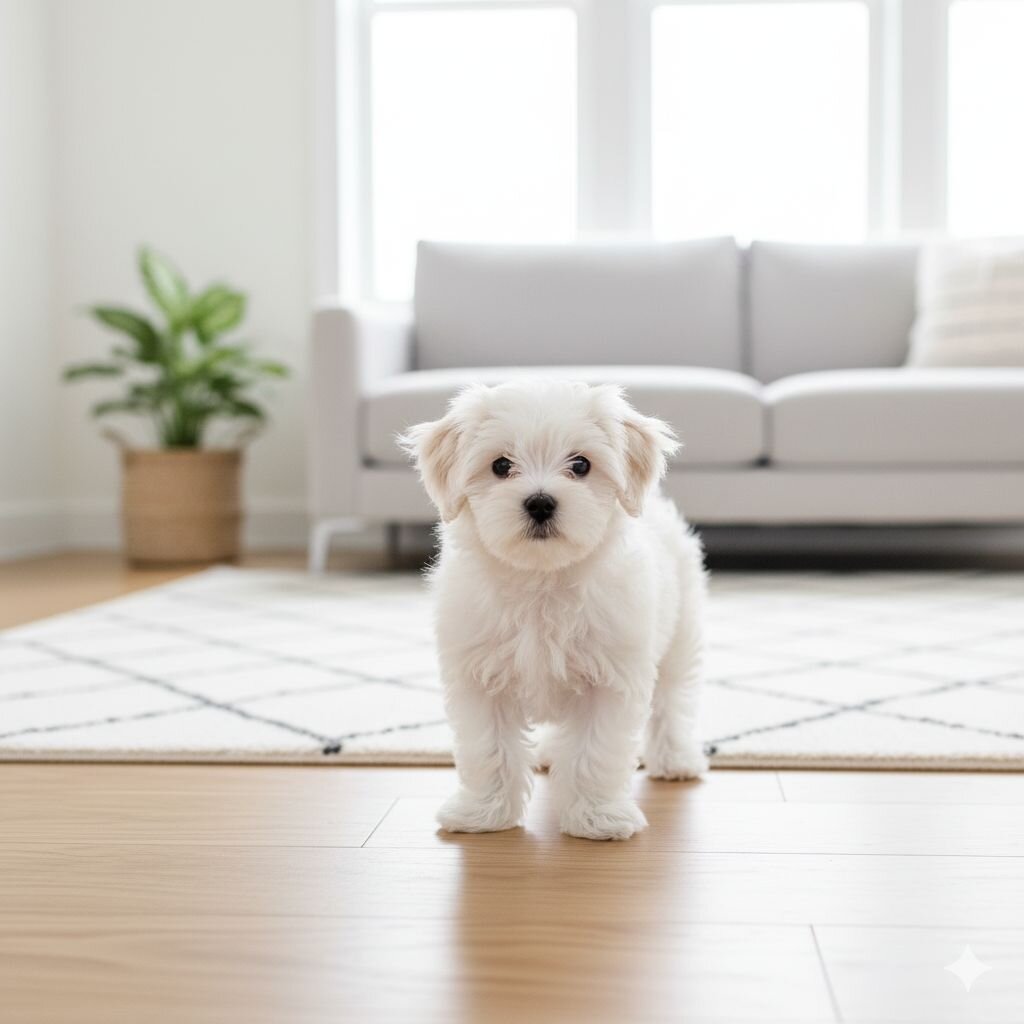
Find a space without many distractions so that your dog can focus. Show him a treat to get his interest.
Step 4 - Lure the Behaviour
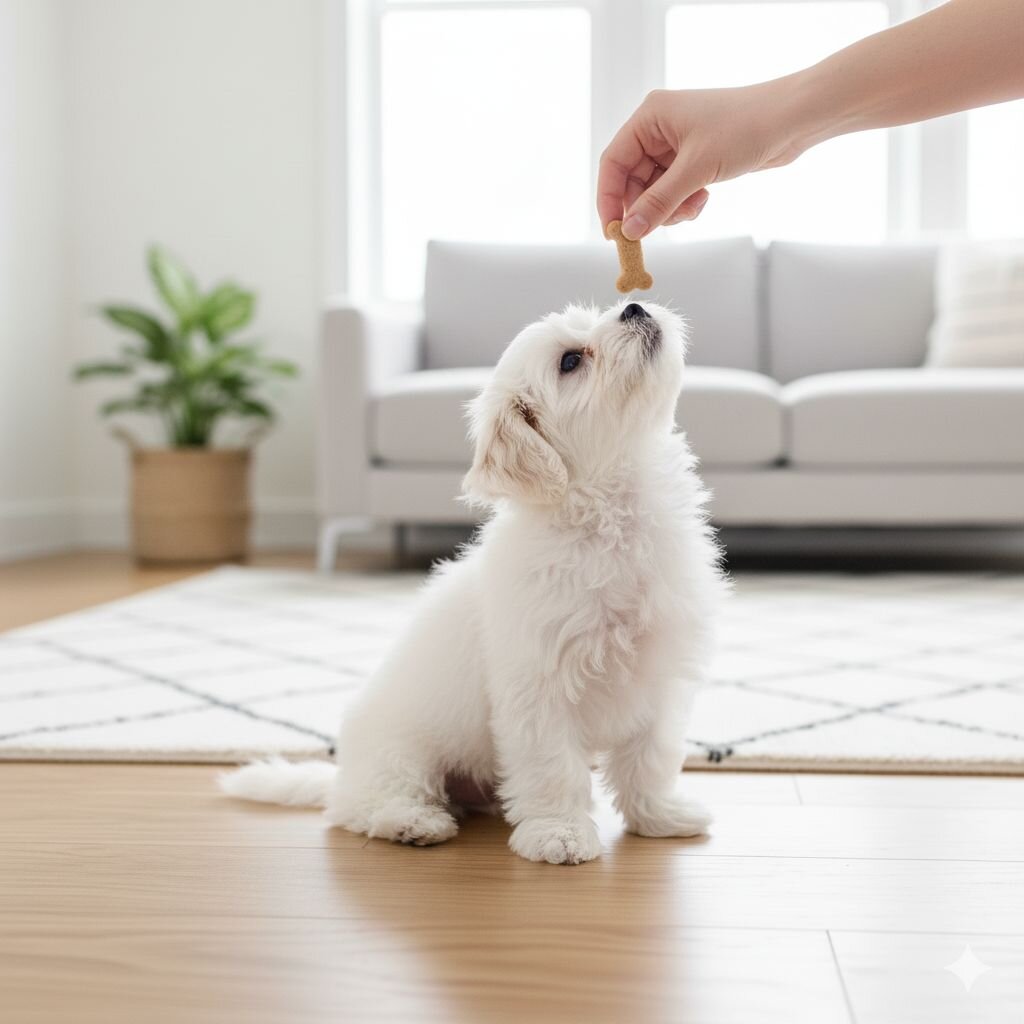
While your dog is focused on the treat, hold it above his head so that he looks upward. Move the treat backwards, just behind his nose so that he begins to tilt his head back.
Step 5 - Capture the Behaviour
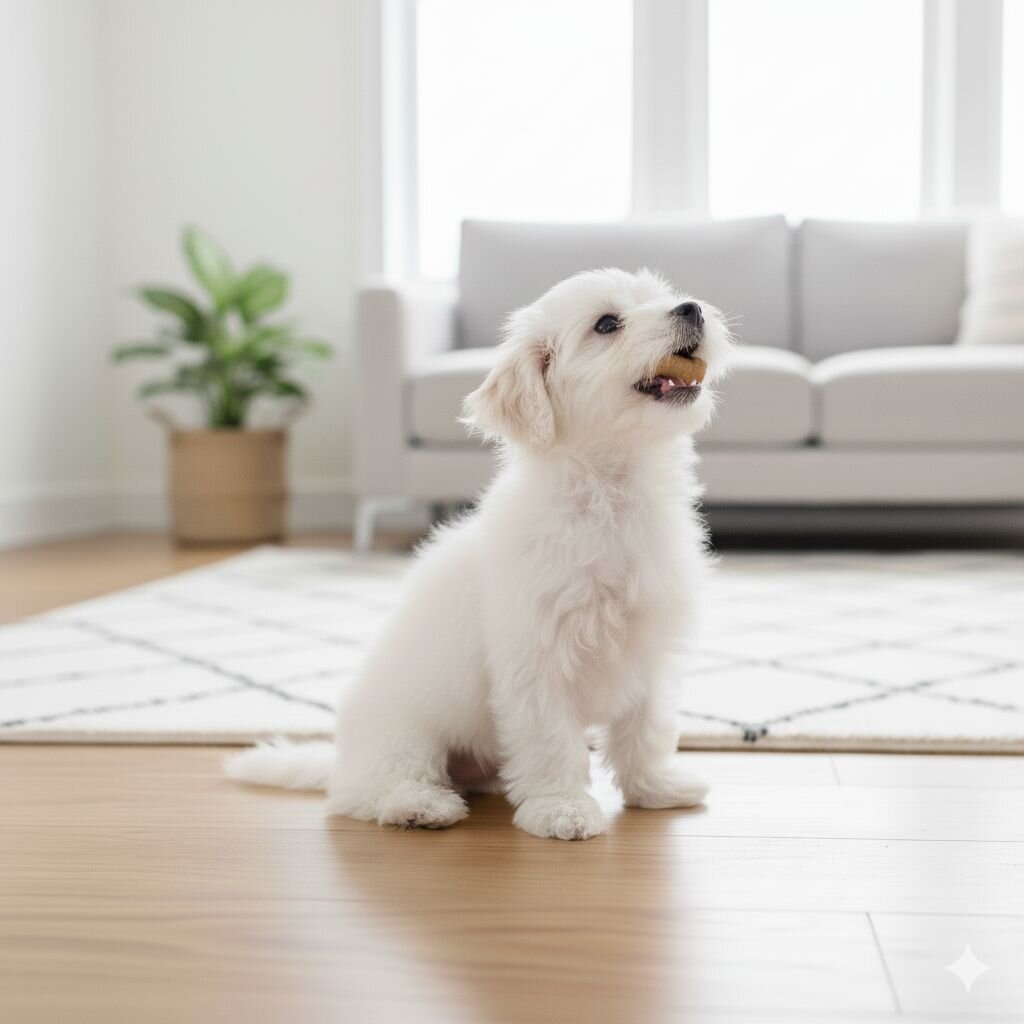
Your dog will naturally try to get to the treat, and to do this from his current position he will need to put his bottom on the floor. As soon as this occurs you must 'capture' the behaviour. This is done by either using a clicker or a praise word (like 'yes') and giving him the treat.
Step 6 - Repeat and add in the Command
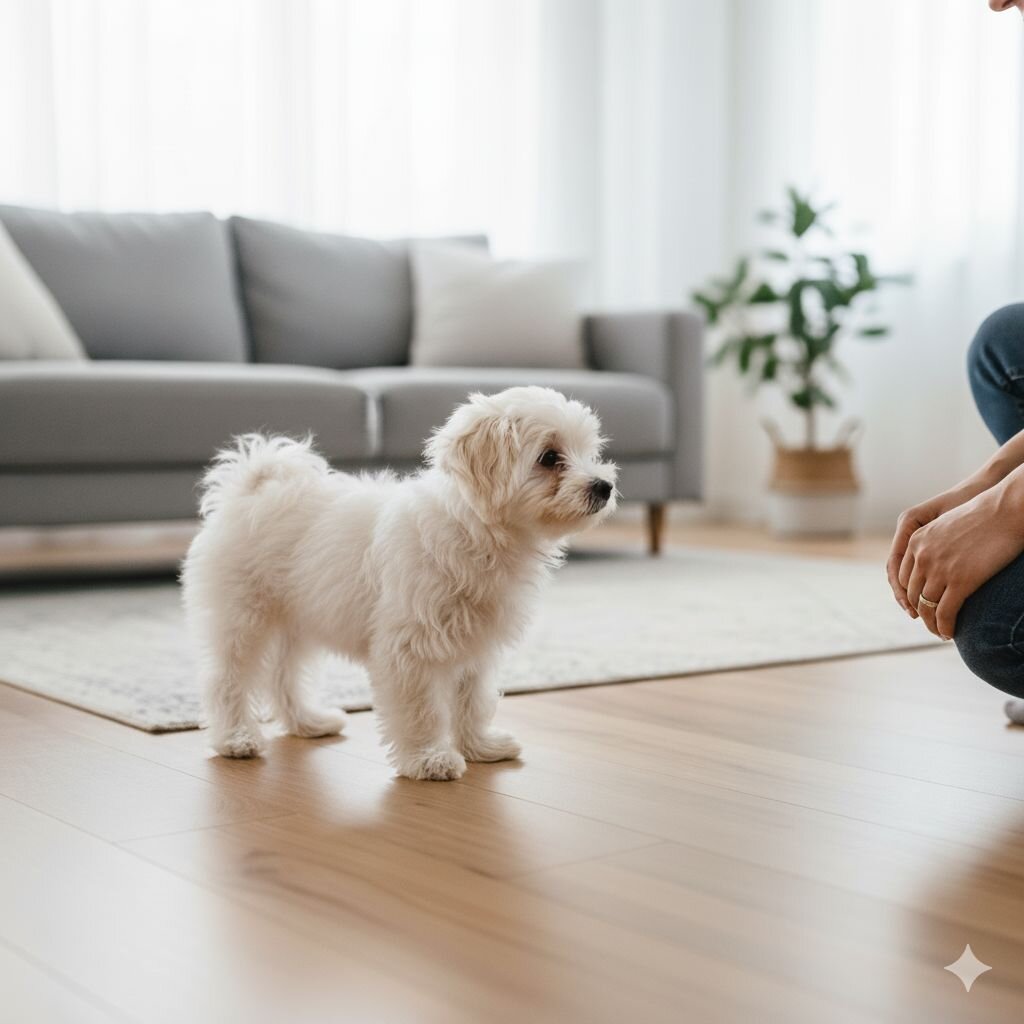
Repeat step 3 until your dog seems to understand what it is that you are wanting him to do. Once he understands, you can repeat the process but use the word 'sit' as you ask him to sit so that he will associate the action with the command.
Step 7 - Practice and Fade the Lure
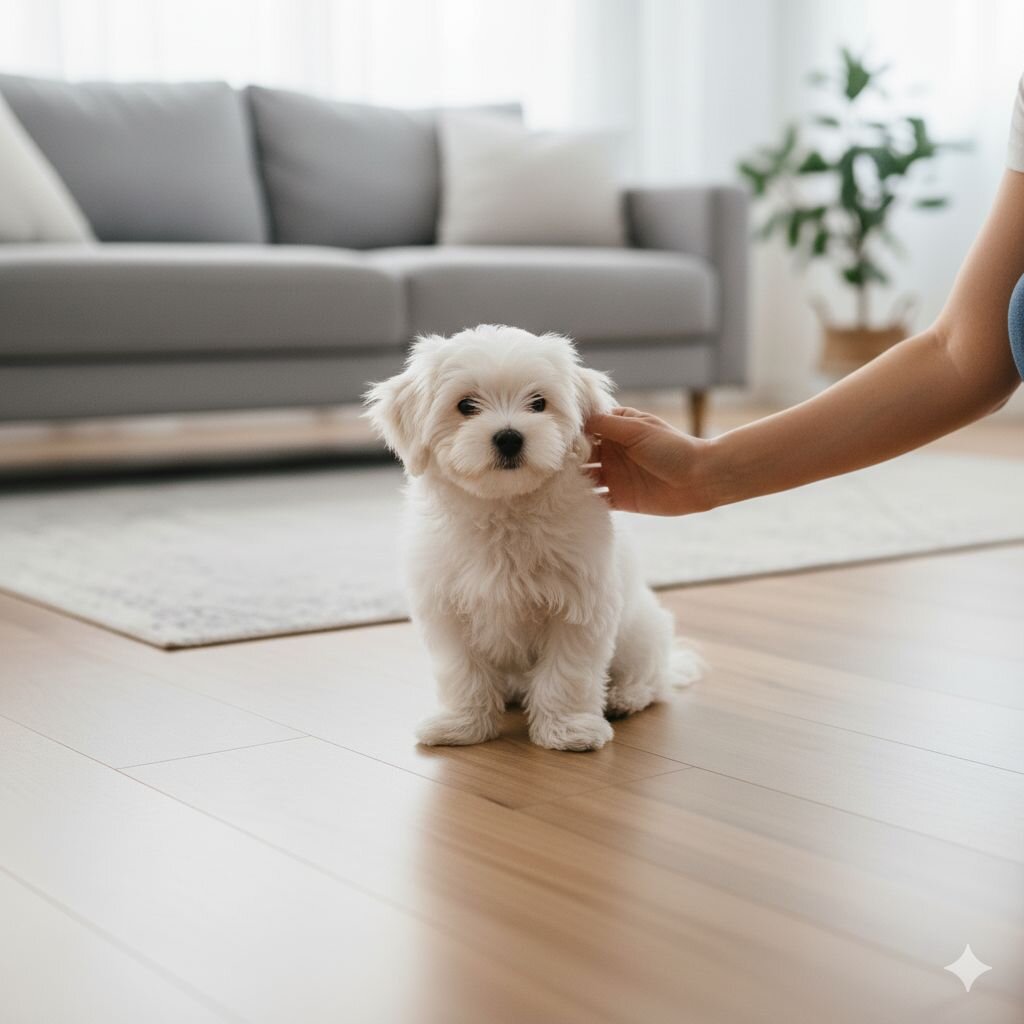
Continue to practice and over time you will find that you no longer need to 'lure' him into the sitting position, and he will respond just to the voice command.
Articles recommended for you
Our vet authored guide to the benefits of feeding your dog fresh food plus tips and advice for introducing it into their regular menu.
See our guide to protecting your pet from parasites from our vet team.
Thinking of getting a fish? Check out our guide for setting up a tank and home care tips!
Looking to understand horse feeds better? This comprehensive guide covers feeding recommendations for horses of all ages and disciplines.
Does your pet suffer from anxiety? Check out our Vet-guide for treatment options to help your pet.
History
Our experts continually monitor the health and wellness space and we update our articles when new information becomes available.
Fri Nov 21 2025
Edited by Dr Antonella Virina DVMDr Teagan Lever BVSc (Hons)
Head Veterinarian, BVSc (Hons)
Pet Circle's Head Veterinarian, Dr Teagan graduated from the University of Queensland in 2010 and went on to work in small animal and mixed practice in various locations around QLD & ACT before joining Pet Circle in early 2016. Dr Teagan has special interests in dermatology, nutrition and preventative health care. She feels privileged to witness the special bond people share with their pets on a daily basis and enjoys forming lasting relationships with pet parents and their fur children.

